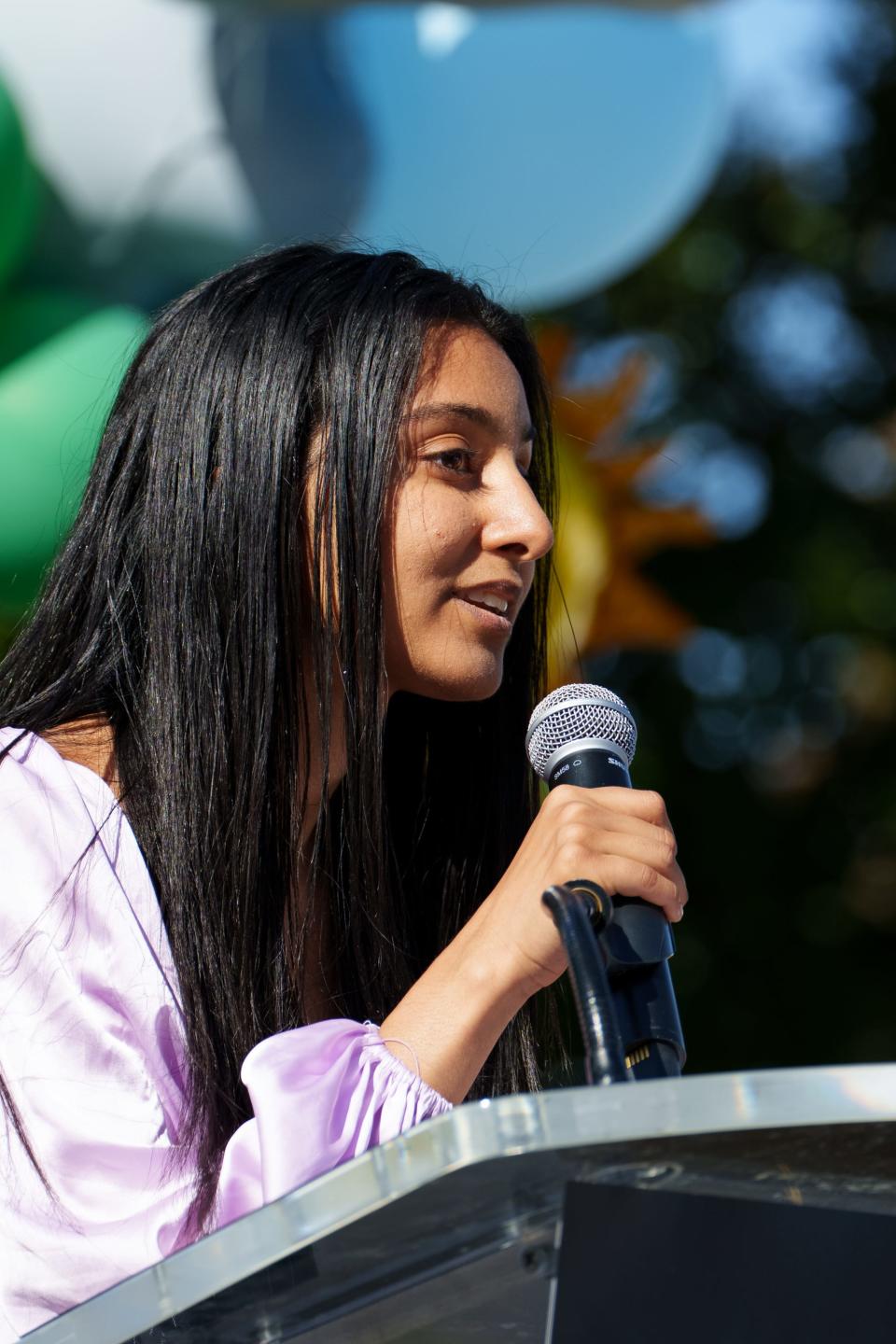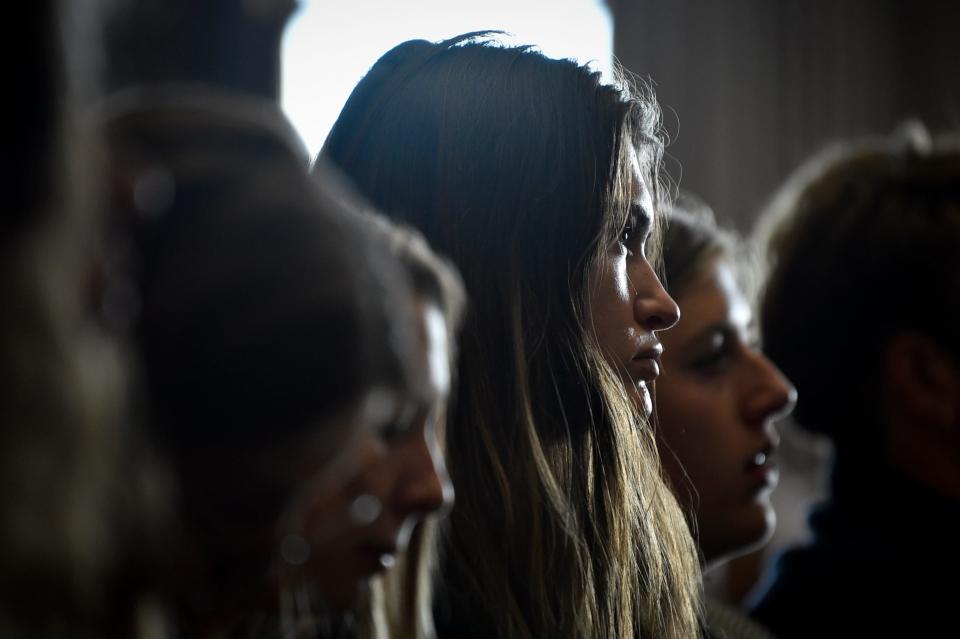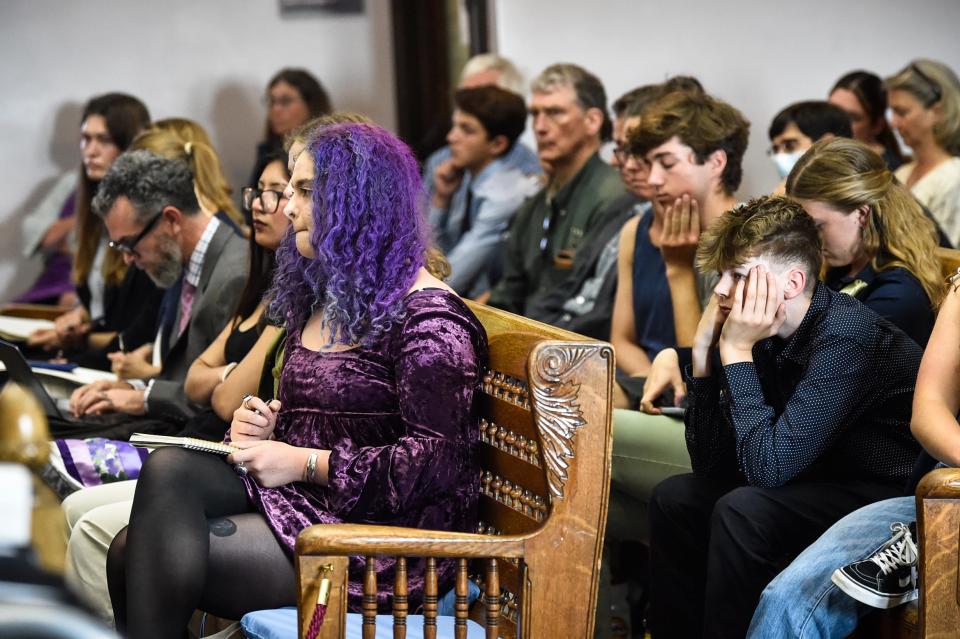After historic climate ruling, Arizonans renew push to guarantee a clean environment
Less than a week after an abnormally intense wildfire killed 115 people and scorched the historic Hawaiian city of Lahaina while smoke from other fires still blanketed much of Canada, a judge in Montana handed down a decision giving young people hope that future similar disasters could still be abated.
On Aug. 14, Judge Kathy Seeley in Montana's Lewis and Clark District Court ruled in Held vs. Montana that the rights of 16 youth plaintiffs to a "clean and healthful environment," per the state constitution, had in fact been violated by the state’s practice of promoting and permitting the fossil fuel industry. The ruling also revoked as unconstitutional two recent Montana statutes that prohibited consideration of greenhouse gas emissions and climate change impacts while conducting environmental reviews, and made it more difficult for groups to challenge state permitting actions.
Though subject to appeal, the outcome of the nation's first constitutional climate change case to go to trial sets a legal precedent recognizing the impact of burning fossil fuels on the quality of life for future generations. Activists hope it could influence other states to do the same.
“As fires rage in the West, fueled by fossil fuel pollution, today’s ruling in Montana is a game-changer that marks a turning point in this generation’s efforts to save the planet from the devastating effects of human-caused climate chaos,” said Julia Olson, executive director of Our Children’s Trust, the law firm that brought the suit in Montana, in a prepared statement.
Our Children's Trust is behind two more youth-led climate cases that are heading for trial, one against the Hawaii Department of Transportation that will be heard next summer and one brought by youth in Oregon against the U.S. government that was filed in 2015 and recently cleared to proceed. Beyond that, a database of more than 1,500 climate change cases filed in U.S. jurisdictions (and nearly 2,500 worldwide) suggests this type of climate action is picking up steam.
In some places, that is.
In Arizona, assistant minority leader Sen. Juan Mendez, D-Tempe, has been trying to get language into the state constitution that would afford residents here similar rights as Montana's guarantee to a "clean and healthful environment," which gave standing to the Held vs. Montana case. But it's not going well.
From 2021: Activists rally for a healthy environment amendment. Could it pass in Arizona?
Mendez introduced SCR1029 in the 2023 legislative session, adding Arizona to a growing list of states where such "green amendments" have been put forward for adoption into the state bill of rights. But it was never scheduled for a committee hearing. The same thing happened last year (SCR1034 in 2022), and the year before that (SCR1041 in 2021).
Now Mendez fears the ruling in Montana may actually make the fight for "the right to a clean and healthy environment, including pure water, clean air, healthy ecosystems and a stable climate," as his one-page bill text puts it, even harder.
"We're working with the Arizona Legislature, which is dominated by Republicans that are off the deep end," Mendez said. "When they hear the news that Montana is going to be guaranteeing future generations clean water, healthy air and land, I'm pretty sure they're gonna make sure that this never happens in Arizona."
A school strike movement graduates to the courtroom
The emission of greenhouse gases from burning fossil fuels is the main type of pollution scientists understand to be causing climate change, or the retention of heat in the atmosphere resulting in warmer average temperatures, worsened droughts and stronger storms. The health consequences of climate change pollution are many, and have been documented to affect children, elderly and those with pre-existing conditions the most.
Research has found a connection between fossil fuel pollution and increased risk for children developing asthma, bronchitis, autistic traits, depression, anxiety, hypertension, immune system dysregulation and more. Exposure to air pollution has also been linked to pregnancy complications, decreased birth weight, and a 12% greater risk of preterm birth, with lower-income and minority mothers hit hardest. These results have prompted groups like Science Moms and Mom's Clean Air Force to push for climate action in the form of a shift toward options like solar energy and electric school buses.
The responsibility of protecting children from climate change has also fallen heavily on children themselves. Youth climate movements like Greta Thunberg's "School Strike for Climate" motivated millions of students over its 5-year run to boycott school on Fridays in protest of how the threats to a livable climate from fossil fuel reliance jeopardized their futures more than missing school would.
Saiarchana Darira is a youth climate activist in Phoenix and recent graduate of Arizona State University who has spoken to The Arizona Republic about her struggles with hopelessness in the face of global warming and feelings of powerlessness to bring about needed change.

Rikki Held, the 22-year-old lead plaintiff in the Montana climate case told the Flathead Beacon before the trial that she felt compelled to join the case because of how much climate change will affect young people.
“In some ways, our generation feels a lot of pressure, kind of a burden, to make something happen because it’s our lives that are at risk," Held said.
Seeley's decision was historic in addressing not only the effects of climate change on physical health and safety but also on the quality of life for young people growing up in a world with more chaotic and destructive weather.
Speaking to the significance of the Montana case, Karen Bradshaw, a law professor at ASU and an expert on nature-related legal matters, said even if that decision is overturned, “it’s hard not to take this seriously."
“One piece of the conversation that would be easy to miss in the opinion, which is over 100 pages long, but is important, is that the judge recognized the mental health concern that this is causing depression and anxiety for young people," she said.
More: Hoping to save lives, experts work on new air quality messaging strategies in Phoenix
Held vs. Montana may have been made possible by Maya van Rossum, an environmental attorney who argued a case in Pennsylvania in 2013 that revived that state's constitutional environmental rights amendment. That experience led her to coin the term "green amendment," author a book about the concept and launch a grassroots movement to recruit lawmakers like Mendez to the cause. The website about van Rossum's efforts to introduce similar language into state constitutions nationwide, forthegenerations.org, is itself a nod to the importance of taking this step on behalf of, and in cooperation with, young people.
“One of my hopes and what we are seeing in other states is that the recent Held victory, demonstrating the value of the amendment in the climate context, is sort of helping to wake people up to this pathway of protection," van Rossum said. "So maybe things will turn around in Arizona in terms of enthusiasm for it."

A 'very long game' on a short runway
Mendez seems to think that enthusiasm for a green amendment among Republican lawmakers in Arizona remains low to nonexistent. But he plans to continue to push for progress. He's working on what he calls his "soft power in the Legislature," continuing to build bipartisan relationships in hopes of eventually reaching a compromise.
“I know my place in time and progress," Mendez said. "Everyone thinks they’re going to be the person that is going to be the one to bring justice to the world. But I paid attention in history classes and I understand that all of this is a very long game.”
The climate politics of building homes: More homes mean more heat. Can new building codes help save metro Phoenix from disaster?
Van Rossum also knows the road ahead is long. Right now, only three states have green amendments that guarantee environmental protection as a constitutional right: Montana, Pennsylvania and New York, which passed theirs just last year. For a green amendment to really have legal teeth, she says it has to be applicable to all levels of government and self-executing, meaning it has to be located in the Bill of Rights or Declaration of Rights section of the state's constitution and enforceable in its own right even if there is no legislation implementing it.
Passing a new constitutional entitlement is a higher bar than just another piece of legislation, she added. But that's one of the values of it — because a right to a clean and healthful environment done this way is also harder to undo or ignore.
“It’s really great that (Mendez) keeps proposing it so that it’s out there and when the moment is right, the language will be there for people to take advantage of," van Rossum said.
The problem with waiting for the right legislative moment is that the moment of climate impacts is already upon us. As of Aug. 8, there have already been 15 weather disaster events nationwide in 2023 exceeding $1 billion in losses each (which does not include the Maui fires), compared to an annual average of 8.1 such events for the time period between 1980 and 2022.

Phoenix made international headlines with its record-breaking and deadly July heat wave. And with greenhouse gas emissions globally still on the rise, scientists are projecting more weather records to fall.
The emissions contributed by fossil fuel activity in Montana or Arizona or any other single state did not by itself cause any of these events, and lawsuits to slow these activities will not by themselves stop them. But legal and scientific experts alongside distressed youth increasingly argue that change has to start somewhere.
"The (Montana case's) claim is based on a small, tiny fraction of 1%," said Troy Rule, a law professor and renewable energy expert at ASU. "But even that is a very large financial claim, potentially, because of the massive damage. So, I think it's just a step in the direction of acceptance of the science, including not just climate change science, but the beginnings of attribution science gaining acceptance in the courts."
Neither Rule or Bradshaw think that constitutional rights cases can solve the climate crisis. They need to be combined with other legal tactics and social demands. Rule pointed to a case in Puerto Rico where lawyers are bringing suit over damages from Hurricane Maria against oil companies using the RICO law (racketeer influenced and corrupt organizations) to allege corruption since the oil companies knew fossil fuel emissions would lead to worsened storms. He also wants Arizona's Corporation Commission to improve regulation of utilities to allow for more clean energy solutions.
"I don't have huge optimism about climate litigation being the answer," Rule said. "In the short run, if we were relying on that, unfortunately, we're probably in trouble. Not that we shouldn't do it. We should bring the claims. It's still exciting and I'm happy about the (Held) decision. But really we need more concerted action in our state legislatures in the regulatory structures that matter like the Corporation Commission here in Arizona."
Read the climate series: The latest from Joan Meiners at azcentral, a column on climate change
Bradshaw has other creative options in mind. She is an expert on the rights of nature movement, which seeks to ensure rights to water for the Colorado River itself, for example. Acts that protect the rights of a bald eagle to the tree it's nesting in is another way to ward off destruction of the environment on which humans and other species rely. She also noted that the Navajo Nation has protections similar to Montana's that could guide efforts in Arizona.
"I think the answer is nestedness," Bradshaw said. "So there's this concept from sustainability that any environmental solution to almost any environmental problem is at once local, state, regional, national and international. So once you accept that model of climate change, where it's happening in China but also it's happening in Montana, you recognize that this is a nested approach and it's targeting one small branch of this whole picture."
In essence, while the Held vs. Montana case places a few more bricks on the climate litigation path, real solutions to climate change will still require addressing every little piece of the puzzle individually with every tool available, everywhere, all at once.
Joan Meiners is the climate news and storytelling reporter at The Arizona Republic and azcentral.com. Before becoming a journalist, she completed a doctorate in ecology. Follow Joan on Twitter at @beecycles or email her at joan.meiners@arizonarepublic.com. Read more of her coverage at environment.azcentral.com.
Sign up for AZ Climate, The Republic's weekly climate and environment newsletter.
Support climate coverage and local journalism by subscribing to azcentral.com at this link.
This article originally appeared on Arizona Republic: Does Arizona owe its youth a clean and healthful environment?

